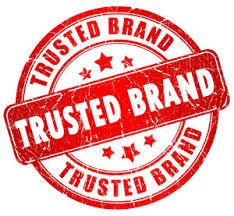
Your personal leadership brand (PLB) reflects your uniqueness as leader –it’s your trademark embodying and communicating your leadership essence, identity, values and style.
Your PLB is driven by your purpose and intentions, and shaped and reinforced by your actions over time. Ultimately, it defines your reputation –the product of your stakeholders’perceptions of your leadership style and impact. There are six compelling reasons why your PLB matters:
- It communicates your essence and uniqueness as a leader;
- It can either build, compromise or ruin your reputation and credibility –your greatest asset as a leader;
- It’s the ultimate indicator of your leadership impact;
- It shapes your future, as a leader;
- It will be your leadership legacy –the thing that you’ll be remembered for in the years to come;
- It can inspire you to clarify, capitalise on, and communicate your values and signature strengths; and
- It can empower you to be who you choose to be.
Before you can measure and manage your PLB, you must understand it. The fact is, whether you are aware of it or not, you already have a ‘default’ PLB and reputation: “what others say about you when you are not in the room”. You should know what this is and if you don’t it’s in your best interest to find out. Ask yourself four questions:
- Is my current default PLB what I want it to be?
- Is it accurately representing the organiation I serve?
- Is it effectively serving me today?
- Will it serve my future career prospects and aspirations?
Your PLB’s purpose and make up –Trust
As with any brand, your PLB’s ultimate purpose is to generate and sustain trust with your stakeholders. Trust is the psychological state resulting fromyour stakeholders’ assessment of whether you:
- Communicate openly, honestly and respectfully;
- Are competent;
- Demonstrate good judgment; and
- Can be relied upon.
Being reliable means (a) that you consistently deliver on your promise and commitments – ‘you are your word’; and (b) that you walk your talk or put your money where your mouth is. Your stakeholders’ trust allows them to become vulnerable – they lower their guard as they have nothing to fear. This means that they are now open and receptive to you and your ideas – they are willing to be influenced by you. At this point, you have their loyalty and commitment. Make sure that you keep that way! As you probably have heard before, trust takes a long time to build, but it’s easy to lose.
Two more ingredients –Fulfilment of expectations and fairness
Two more elements determine your PLB: (1) the degree to which you are fulfilling your stakeholders’ expectations; and (2) their perception of how fair you are. Before you can fulfil your stakeholders’ expectations you need to know what they are. Do you really know what they expect from you? You can use a simple three step process to find out:
- Write down what you think their expectations are;
- Ask them what their expectations are; and
- Compare notes.
The resulting gap (and believe me, large or small, there will be one!) will deeply inform your strategy. In doing so, remember this: unmet stakeholders’ expectations translate into low levels of trust, commitment, satisfaction, effort, innovative behaviour and ultimately performance–action and results. Expectations that are met or exceeded yield the opposite effect. Fairness relates to whether your followers believe that you:
- Make decisions in a fair and impartial manner;
- Don’t blame others when things go wrong; and
- Don’t play favourites with your team members.
Credibility
Put together, the three elements described above (Trust + Fulfilment of stakeholders’expectations + Fairness) determine your reputation and credibility as a leader. Credibility is the foundation of leadership. Leadership is relational – its effectiveness is determined by the quality of the relationships you have with your stakeholders. And, above all, leadership is about being able to influence others. To do this effectively you need to demonstrate the highest possible levels of integrity, respect, credibility and trust. No trust, or low levels of trust, means no credibility, no ability to influence others and no results.
How to measure your PLB, reputation, credibility and leadership impact
As a leader, and assisted by your executive coach, you first carefully select and invite a range of key stakeholders to become your ‘raters’ or ‘evaluators’ to respond to standardised questions via an online survey arranged by your coach. Next, your coach conducts behavioural interviews with your nominated stakeholders following the completion of the survey. Results are provided to you in two separate written reports (the first contains quantitative benchmarked data and the second contains themes and a rich narrative) which capture your stakeholders’ collated responses (to preserve their confidentiality). These results then become the foundation for an action plan to take your leadership to the next level. This process is applicable whether you are:
- An experienced and highly accomplished senior leader;
- An emerging senior leader (middle level manager) who would like to move into a senior leadership team, unleash your leadership potential, acquire strategic leadership skills and bolder strategies to motivate and develop teams, and make a significant difference to your team and organisation; or
- An aspiring leader who would like to fast-track your career and leadership potential, gain new insights and self-awareness, develop your strategic thinking ability, and gain new leadership perspective and capability.
Are you ready for the challenge?
—————————————————————————————————————-
Sebastian is a highly experienced Leadership Development Expert and Executive Coach (Business Psychologist), who assists leaders to creatively and successfully shape their future in an increasingly demanding world where hyper-complexity is the new normal. He can be contacted on: Ph: + 61-413 777 591 Email: sss@pts.net.au


